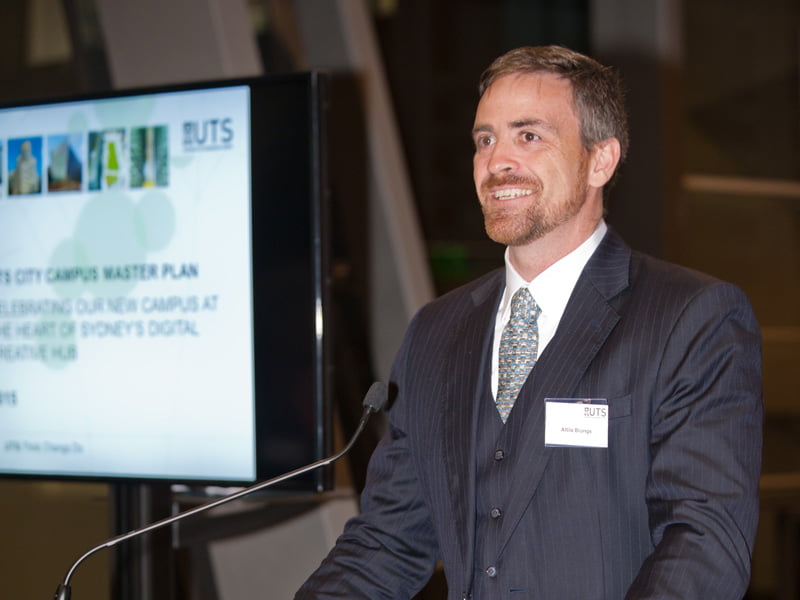Australia’s GDP is 8.5 per cent higher because of the impact of university education on the workforce – adding $140 billion to the nation’s coffers last year.
The figure, contained in a yet-to-be-released report from Deloitte Access Economics commissioned by Universities Australia, makes clear the value of tertiary study to the nation thus far – but what value could universities offer to the innovation economy?

Releasing Universities Australia’s Policy Statement and some headline results from the new study last week, Professor Barney Glover, Chair of Universities Australia and Vice Chancellor (VC) of Western Sydney University, proposed Australia:
- invest in a major technology and innovation programme, similar to the UK’s Catapult initiative, to stimulate economic growth and diversification in university-industry engagement;
- establish an Innovation Board, comprising senior Government, industry, university and research community representatives, to provide strategic leadership regarding an integrated national research and innovation effort; and,
- create a Student Innovation Fund to encourage undergraduate entrepreneurship
Professor Attila Brungs, Vice Chancellor of University Technology Sydney (UTS), isn’t waiting. A former McKinsey & Co consultant, Brungs was CSIRO’s general manager for science investment strategy and performance, before joining UTS in 2009, initially as deputy VC for research and now as the University’s VC.
On his watch UTS has forged strong links with industry through the innovation precinct that surrounds UTS with partners including the Commonwealth Bank, Ernst&Young, Cisco and IBM (Brungs also appointed IBM’s former research director Glenn Wightwick as his deputy VC, Research.
Working with Microsoft, UTS has established The Hatchery to support student or university entrepreneurs, and the Data Arena – an industry accessible data visualisation service – again focused on meshing academe with industry.
Meanwhile CommBank is one of the first companies to leverage the BlueChilli led programme offered through the UTS Business School, which teaches established corporates start-up skills.
Under Brungs, UTS is sketching the blueprint for the way in which innovative businesses and universities can share talent, resources and intelligence.
To Brungs the innovation precinct – which ticks the boxes of being close to an airport, offering relatively cheap real estate (if there is such a thing in Sydney) and within walking distance of a leading research institution – is the living breathing heart of his innovation ambitions.
“Our job as a public university is to drive it as hard and as fast as we can. Part of our mission as a public university, broadly speaking, is to drive prosperity for the nation. You do that through making sure students have skills sets to create jobs that lead to more jobs that lead to employment for all Australians. You do that through research to get impact and to improve the human condition and by entering into public policy debate.”
At the micro level Brungs is establishing an innovation ecosystem that delivers benefits to students, academics and industry of all scales.
“The ground level of every single one of our buildings has industry partners involved in it. I’m spending more and more of my time in giving space to smaller companies, to create critical mass, and so that students get involved more easily.”
Brungs – who last week hosted Assistant Minister for Innovation Wyatt Roy on a tour of The Hatchery – acknowledges that there needs to be a rethink in the way universities engage with industry.
“We bring a whole lot of benefits – in the precinct we bring equipment and facilities, and an honest broker – everyone trusts we are doing it altruistically. Also we are spending lots of our money where industry wouldn’t, literally on things that benefit the industry as a whole…even a big industry would be hard pressed to afford a $10 million Data Arena.”
Brungs is looking to create a porous interface between the university and industry so that; “Our students get to see industry, work with industry on real problems and get a better understanding of how to work in industry before they graduate. It also makes sure our academics stay connected to industry – not that I’d ever criticise academics, but occasionally they can become a little bit isolated if they don’t continue rubbing up against industry.
“University and industry engagement – this needs to be different and it comes back to policy. One of the problems we have in a policy setting space is every time the government comes out with a commercialisation policy, they focus on university and industry engagement around research. I do not underplay the importance of research – but for innovation you have to think more broadly, you have to think about people-to-people interactions. What I am trying to do at this university is work to get the state of the art at university into industry.”
And that, says Brungs, needs a different approach.
For small and medium fast growing businesses Brungs says; “You can go to a company and say ‘you have a fantastic product, in two years I can give you a fantastic next generation product’. That’s not necessarily going to be helpful. If I can say, ‘look here’s a state of the art in your area’, they look at it and say ‘oh I can do a business process innovation or a new service innovation’ or something else that enables them to generate growth – that’s more valuable.
“If you really want to drive the innovation agenda forward – [it’s about] how do we get industry and universities swapping professionals more and more. At UTS we are doing this by changing promotion criteria, by changing the type of academic tracks to bring innovation backward and forward,” said Brungs.
He’s also trying to encourage the Government to rethink PhD funding – with a focus not on replenishing academic stocks, but creating industry-ready PhDs able to work commercially and drive the economy forward faster.
*Photo Credit: GFP Studios
Do you know more? Contact James Riley via Email.

